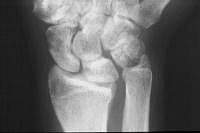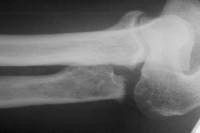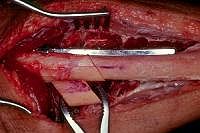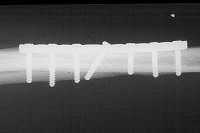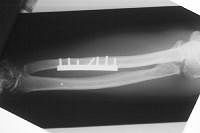| The Essex-Lopresti syndrome may develop
after a proximal radial fracture such as a radial head fracture, excision
of the radial head for fracture, or a displaced proximal radial shaft fracture.
The Essex-Lopresti syndrome results when such a fracture, associated with
disruption of the forearm interosseous membrane, allows proximal migration
of the radius with secondary problems arising at the distal radial ulnar
joint.
When recognized early, the problem may be prevented or at least lessened
by anatomic fracture fixation or by radial head replacement with a metal
radial head implant.
Late reconstruction is difficult because of chronic changes in the forearm
architecture, and options include ulnar shortening, distal ulnar resection,
or graft reconstruction of the interosseous membrane. Each of these
approaches has its own problems, and recurrence may develop after any of
these procedures. Fresh frozen allograft has also been reported for this
use, (click
here for reference) but long-term outcome studies are still pending.
|
